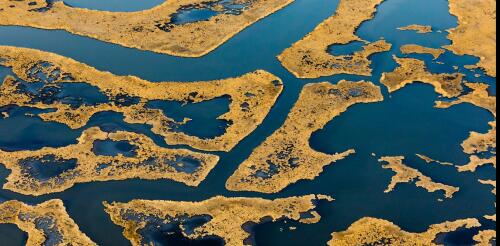Climate change
In the wake of North America’s recent solar eclipse, another historic natural event is on the horizon. From late April through June 2024, the largest brood of 13-year cicadas, known as Brood XIX, will co-emerge with a midwestern brood of 17-year cicadas, Brood XIII. This event will affect 17 states, from Maryland west to Iowa and south into Arkansas, Alabama and northern Georgia, the Carolinas, Virginia and Maryland. A co-emergence like this of two specific broods with different life cycles happens only once every 221 years. The last time these two groups emerged together was in 1803, when Thomas Jefferson was president. For about four weeks, scattered wooded and suburban areas will ring with cicadas’ distinctive whistling, buzzing and chirping mating calls. After mating, each female will lay hundreds of eggs in pencil-size tree branches. Then the adult cicadas will die. Once the eggs hatch, new cicada nymphs will fall from the trees and burrow back underground, st...
Climate change is threatening America’s water infrastructure as intensifying storms deluge communities and droughts dry up freshwater supplies in regions that aren’t prepared. Severe storms that swept through the South in April 2024 illustrated some of the risks: In New Orleans, rain fell much faster as the city’s pumps could remove it. A water line broke during the storm near Hattiesburg, Mississippi. Other communities faced power outages and advisories to boil water for safety before using it. We study infrastructure resilience and sustainability and see a crisis growing, particularly in the U.S. Southeast, where aging water supply systems and stormwater infrastructure are leaving more communities at risk as weather becomes more extreme. Neighborhoods across the New Orleans area flooded on April 10 as the region’s pumps couldn’t keep up with the rainfall. Credit: Reed Timmer. To find the best solutions and b...
Wetlands have flourished along the world’s coastlines for thousands of years, playing valuable roles in the lives of people and wildlife. They protect the land from storm surge, stop seawater from contaminating drinking water supplies, and create habitat for birds, fish and threatened species. Much of that may be gone in a matter of decades. As the planet warms, sea level rises at an ever-faster rate. Wetlands have generally kept pace by building upward and creeping inland a few meters per year. But raised roadbeds, cities, farms and increasing land elevation can leave wetlands with nowhere to go. Sea-level rise projections for midcentury suggest the waterline will be shifting 15 to 100 times faster than wetland migration has been clocked. Many wetlands, like these on Cape Cod, are now bordered by human infrastructure, including towns and roads. Lance Cheung/USDA I have been studying coastal g...
The historic Paris climate agreement started a mantra from developing countries: “1.5 to stay alive.” It refers to the international aim to keep global warming under 1.5 degrees Celsius (2.8 Fahrenheit) compared with preindustrial times. But the world will likely pass that threshold within a decade, and global warming is showing little sign of slowing. The world is already facing natural disasters of epic proportions as temperatures rise. Heat records are routinely broken. Wildfire seasons are more extreme. Hurricane strength is increasing. Sea level rise is slowly submerging small island nations and coastal areas. The only known method able to quickly arrest this temperature rise is climate engineering. (It’s sometimes called geoengineering, sunlight reduction methods or solar climate intervention.) This is a set of proposed actions to deliberately alter the climate. These actions include mimicking the cooling effects of large volcanic eruptions by putting la...
Earth Day is April 22, and climate activists around the world are planning rallies and other events to draw attention to the growing threats posed by climate change. Many of these demonstrations will focus on what humanity can do to stop fueling the damage. But while activists are amplifying the dire findings from scientists, you’ll likely see fossil fuel supporters attacking them on social media and TV. It’s easy to get caught up in the myths about climate activism, particularly in today’s polarized political environment. So, let’s take a moment to explore the truth about three of the big myths being told about climate activism and the climate movement today. Myth 1: Climate activists are just young people The media tends to focus most of its attention on young people in the climate movement, including those inspired by Greta Thunberg’s school strikes for climate, the international Fridays for Future, or the Sunrise Movement, which focuses on U....




